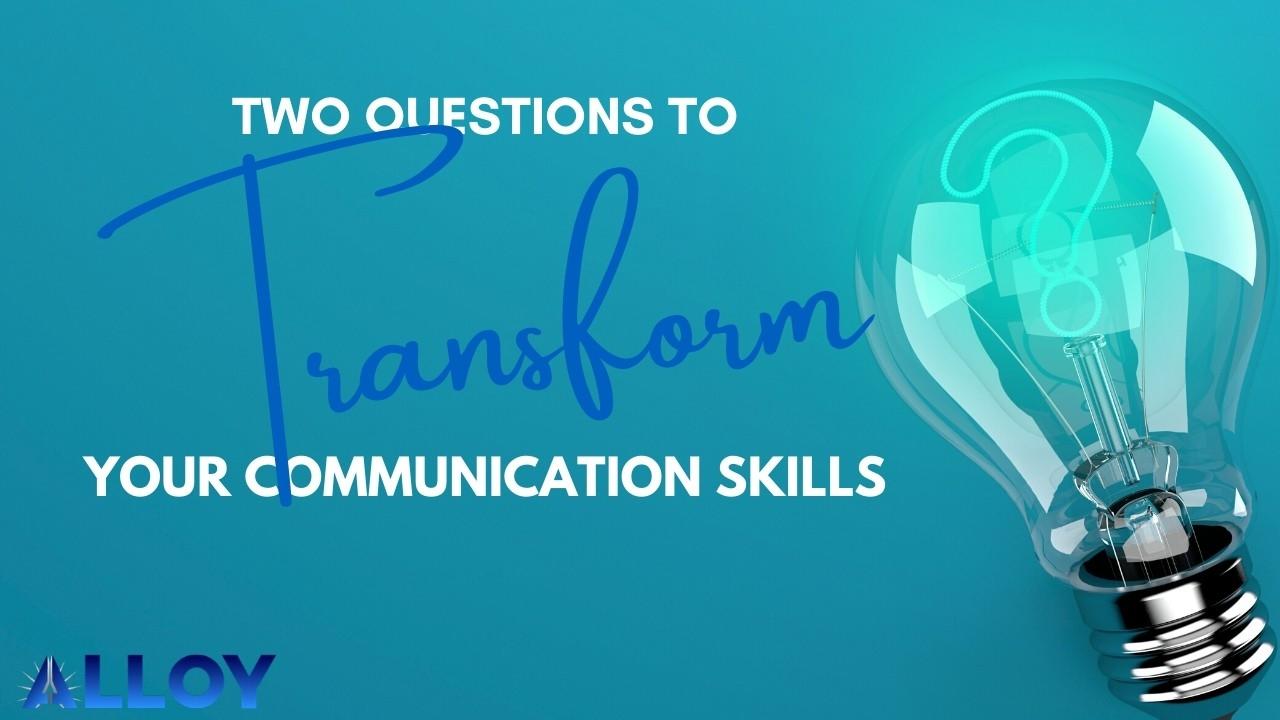Two Questions to Transform Your Communication Skills

Two Questions to Transform Your Communication Skills, by Ryan Hansen
You know those moments where you hear something and it immediately changes the way you think? That wave of clarity crashes over you, and suddenly it all makes sense! I call these instances "lightbulb moments," and they have marked some important realizations throughout my life.
Two years ago, I had a lightbulb moment I'll never forget.
As I was sitting in a hotel conference room in Orlando, Florida, a trainer caught my attention with this line: "Today, I am going to instantly improve your communication skills with just two questions."
Looking back, I think I rolled my eyes. Okay dude, sure you are, I thought. Let's see you impress this room of trainers...
Then the trainer explained the two questions, and my lightbulb went on.
Human Behavior is Predictable.
People are funny. There are billions of us, from hundreds of countries, cultures, races, and religions, and yet, in many ways, we're all the same.
The DISC model of human behavior explains that there are four basic personality styles, and each of us expresses some combination of these four styles. Our team loves the DISC model and the way it helps individuals understand and connect with one another (Jamie even co-wrote a best-selling book about DISC).
DISC uses four quadrants to visualize the personality styles and their relationship to the others. The four styles are as follows:
Direct - Sometimes referred to as the Dominant type, this subset is comprised of natural-born leaders who can't wait to get things done and may steamroll over others to achieve their goals.
Inspiring - This group is characterized by its love for connection, friendship, and fun.
Supportive - While they may come across as quiet, this style often maintains strong connections and has a sixth sense for the feelings of others.
Cautious - This style stands out for its love of details and precision in the pursuit of high-quality work.
Graphically, the styles are arranged this way:
So, you're probably wondering, what were the two questions?
Take another look at the DISC chart. The styles are clearly, and deliberately, split into four sections along vertical and horizontal axes. Those axes represent the two questions that initiated my lightbulb moment:
1) Are you more outgoing, or more reserved?
This question splits the chart into two halves: top and bottom. The top half (D and I) are the more outgoing styles and the bottom half (C and S) are more reserved. The difference presents itself in a person's "motor" - are they bubbly, energetic, and excitable? They're probably more outgoing. If a person seems more contemplative, quiet, and restrained, they probably fall into the reserved half of this chart.
2) Are you more task-oriented, or more people-oriented?
The second question splits the chart again, this time vertically, into four quadrants. Task-oriented styles are on the left side, while people-oriented styles appear on the right. A clarifying question for this dichotomy might be, "When you wake up in the morning, do you think about everything you get to do today, or do you start by thinking about all of the people you get to see today?"
With all four quadrants defined, we know that the styles represent the following: Direct (outgoing, task-oriented), Inspiring (outgoing, people-oriented), Supportive (reserved, people-oriented), and Cautious (reserved, task-oriented).
This was my moment of clarity: When we know the basic personality styles and their communication preferences, we can design every interaction to match the preference of our audience. What if every email you received was written exactly the way you would like to read it? What if every meeting was structured to align with your personality style? What if every piece of sales copy was written to reach your specific customers, in their preferred style?
That is the real power of understanding personality styles: recognizing each style and applying the knowledge to improve connection and collaboration. Communication improves. Customer experience increases. Employee satisfaction goes up. Marketing materials become more impactful. Sales increase.
What could DISC do for your business?
Ready to get started with DISC? Contact our team at 402-779-5846 or drop us a line at [email protected] to learn more!

